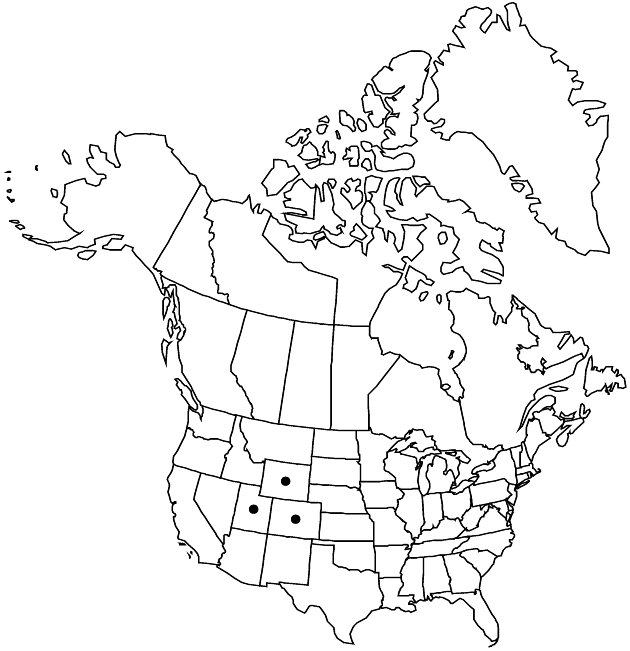Erigeron uintahensis
Bull. Torrey Bot. Club 70: 270. 1943.
Perennials, 20–50 cm; rhizomatous to subrhizomatous, fibrous-rooted, caudices usually branched, thick, woody. Stems erect, sparsely hirsuto-pilose (hairs 1–2 mm), sometimes minutely glandular. Leaves basal (usually withering by flowering) and cauline; basal blades oblanceolate to oblanceolate-spatulate, 30–100 × 8–20 mm, margins entire, ciliate, faces sparsely hirsuto-pilose, minutely glandular; cauline blades lanceolate to oblong, oblong-ovate, or broadly ovate, nearly even-sized distally or sometimes mid largest (continuing to immediately proximal to heads, bases clasping to subclasping). Heads 1–5 (in corymbiform arrays). Involucres 5.5–7 × 12–18 mm. Phyllaries in 2–3 (–4) series, sparsely hirsute-pilose, densely minutely glandular. Ray-florets 75–125; corollas blue to lavender, 9–15 mm (ca. 1 mm wide), laminae coiling at tips. Disc corollas 4.4–5 mm. Cypselae 1.6–2 mm, 2-nerved, faces sparsely strigose; pappi: outer of setae, inner of 20–25 bristles. 2n = 36.
Phenology: Flowering (Jun–)Jul–Aug.
Habitat: Sagebrush, mountain brush, ponderosa pine, aspen, spruce-fir, alpine meadows
Elevation: 2000–3400 m
Distribution

Colo., Utah, Wyo.
Discussion
Intergrades occur with Erigeron subtrinervis and E. speciosus.
Selected References
None.